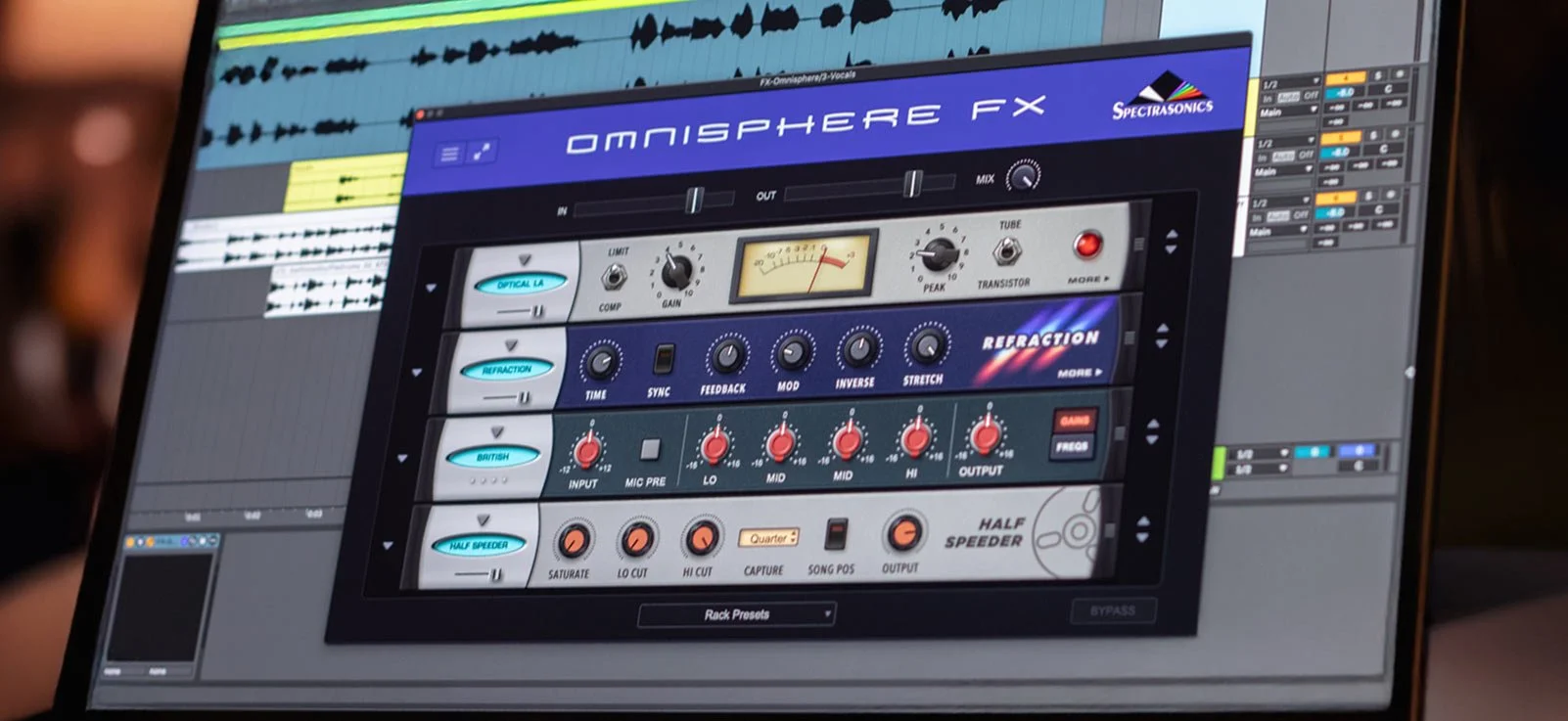Omnisphere 3 Is Here: Everything You Need to Know About Spectrasonics’ Flagship Synth Update

After nearly a decade of anticipation, Spectrasonics has finally unveiled Omnisphere 3 — the long-awaited follow-up to one of the most influential software synths ever made. The last major version, Omnisphere 2, arrived in 2015 and became a staple for film composers, electronic producers, and sound designers alike. Version 3 keeps that expansive DNA intact but completely modernizes the engine, workflow, and sonic possibilities. Rather than reinventing itself, Omnisphere 3 feels like a deep evolution — with analog warmth, smarter controls, a vastly expanded sound library, and a new FX Rack plugin that lets you use its legendary effects anywhere in your mix. It’s the kind of update that doesn’t chase trends; it reasserts why Omnisphere remains the gold standard in virtual synthesis.
TL;DR: What’s New in Omnisphere 3
26,000+ patches: A massive updated library with faster browsing and lossless optimization.
Smarter workflow: Adaptive Controls and Patch Mutation make editing and experimentation effortless.
FX Rack plugin: Use Omnisphere’s 90+ effects (including 35 new ones) as a standalone processor.
Hardware-ready: Expanded integration for over 300 synths and MIDI controllers.
Analog warmth: New filters, oscillator drift, and component-modeled saturation for a more organic tone.
Quadzone layering: Build complex, expressive patches with four more independent layers.
The Library and Interface Overhaul
Omnisphere has always been known for its sheer depth, but version 3 manages to expand that scale while actually making it easier to navigate. The new library includes over 26,000 patches, blending thousands of freshly designed sounds with remastered versions of every legacy preset. Spectrasonics also introduced lossless sound optimization, meaning all that new content doesn’t take up more disk space than before — a huge improvement for anyone juggling large sample collections.
The browser and interface have been rebuilt from the ground up. You can now filter sounds by category, mood, or complexity, and hide sources or libraries you don’t need. The redesigned layout feels faster and more immediate, especially when auditioning patches or layering multiple sound sources. For a synth famous for its scale, Omnisphere 3 finally feels manageable — even inspiring — to explore.
A Rebuilt Core and Richer Sound
At the heart of Omnisphere 3 lies a renewed sound engine designed to feel more alive than ever. Spectrasonics added oscillator drift and component-modeled saturation, giving patches subtle movement and imperfection reminiscent of vintage analog gear. The new filter section—36 types in total—ranges from silky Oberheim-style sweeps to biting modern resonant designs. Combined, they bring warmth and character that were missing from previous versions, especially in basses and evolving pads.
The biggest structural change is the Quadzone architecture, which lets each of Omnisphere’s four layers operate more independently than before. You can now split, blend, and modulate them across key ranges, velocity, or custom macros — effectively turning Omnisphere into four powerful synths under one hood. Add in the polyphonic frequency shifter and refined glide and portamento options, and it’s clear Spectrasonics wanted to make Omnisphere 3 not just a sound library, but a genuinely expressive instrument for both players and programmers.
Creative Workflow and the FX Rack
One of the most meaningful updates in Omnisphere 3 is how much faster it is to go from sound to song. The new Adaptive Controls automatically map essential parameters like Tone, Ambience, and Filter depending on the patch — so instead of menu diving, you can make meaningful tweaks immediately. It’s a small but transformative change that makes Omnisphere feel more like a hands-on synth than a static preset machine. The Patch Mutation feature builds on that idea, letting you generate instant variations of any sound. Each mutation feels intentional, not random — like having a sound designer sitting beside you reshaping ideas in real time.
Then there’s the FX Rack plugin, arguably one of the biggest new features in Omnisphere’s history. It lets you use Omnisphere’s complete suite of 90+ effects, including 35 new processors, as a standalone plugin on any track. That means lush reverbs, granular delays, vintage compressors, and modulation effects can now be applied to vocals, drums, or guitars without loading the full synth. It turns Omnisphere into both a sound design powerhouse and a versatile mixing tool — something that could easily become part of your everyday DAW workflow.
Alternatives to Consider
If you’re looking for something in the same creative ballpark as Omnisphere 3, a few synths stand out as genuine contenders. Arturia Pigments is probably the closest in spirit — a hybrid powerhouse that combines wavetable, virtual analog, granular, and sample playback engines in one slick interface. It’s far more visual and interactive than Omnisphere, making modulation and sound design incredibly intuitive. Pigments doesn’t have the same depth of curated content, but it rewards experimentation and modern genres with immediacy and flexibility.
KV331 SynthMaster 3 sits somewhere in between — a feature-packed hybrid synth that blends wavetable, vector, and additive synthesis with a deep modulation system. It’s affordable, versatile, and capable of producing huge, evolving sounds if you’re willing to dig in. While none of these match Omnisphere’s sheer scale, they each cover a different slice of its universe: Pigments for design freedom, Diva for analog tone, and SynthMaster for versatility on a budget.
Finally, Xfer Serum, takes a more modern, digital approach to synthesis. Where Omnisphere leans into depth and realism, Serum is all about precision and control — a clean, visual interface where every waveform, modulation, and filter curve can be sculpted in real time. Its high-resolution wavetable engine remains one of the best in the game, perfect for cutting-edge electronic genres like trap, hyperpop, and modern EDM. It’s not as cinematic or organic as Omnisphere, but for producers who want immediate, hands-on sound design and sharp, polished tones, Serum is still one of the most powerful synths you can own.
Final Thoughts
Omnisphere 3 isn’t about reinventing what Spectrasonics already perfected — it’s about refinement on every front. The sound engine finally has the warmth and movement producers have been asking for, the interface is faster and more intuitive, and the inclusion of the FX Rack plugin extends its usefulness far beyond synthesis. It feels like a genuine flagship again — one that rewards both quick inspiration and deep programming.
What stands out most is how cohesive the update feels. Every change, from the Adaptive Controls to the redesigned browser, seems built around actually using Omnisphere more fluidly day to day. After ten years, this isn’t just a version bump — it’s a reminder of why Omnisphere became the benchmark in the first place.
This site contains affiliate links. If you book or purchase through these links, I may earn a commission at no extra cost to you. This helps support the site and keeps my content free. As an Amazon Associate, I earn from qualifying purchases.

